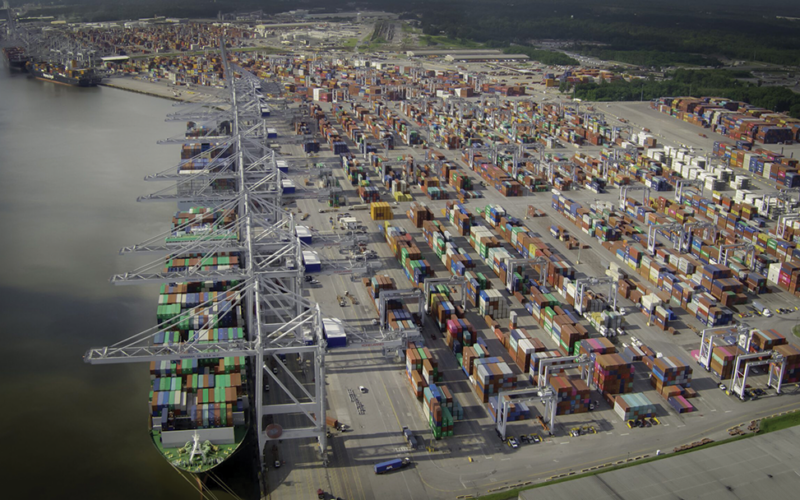 The Georgia Ports Authority (GPA) saw a significant increase in container volumes at the Port of Savannah in February, with 451,670 twenty-foot equivalent container units (TEU) moved. The latest figure marks a 14.4 percent rise compared to the same period last year.
The Georgia Ports Authority (GPA) saw a significant increase in container volumes at the Port of Savannah in February, with 451,670 twenty-foot equivalent container units (TEU) moved. The latest figure marks a 14.4 percent rise compared to the same period last year.
Contributing to the surge was a 19 percent increase in loaded import containers and a 10 percent rise in export loads with the uptick in volume marking two consecutive months of growth.
In January, the GPA handled 428,000 twenty-foot equivalent container units, an increase of 1.5 percent compared to the same month last year.
“The region’s fast-growing population, and an increasing number of manufacturing and logistics operations are both factors in the long-term expansion of trade through Georgia,” said GPA President and CEO Griff Lynch.
Despite a challenging beginning to the fiscal year, Lynch said he “is optimistic that the improved volumes will lead to a robust second half of Fiscal Year 2024.”
The GPA’s fiscal year ends in June.
Earlier this year, the Georgia General Assembly allocated just over $6 million for special harbor improvements at the Port of Brunswick as part of the state’s midyear budget adjustment.
Governor Brian Kemp signed the funding bill into law on February 29.
“I was proud to sign the FY2024 amended budget with key investments in areas like education, public safety, and workforce development,” said Kemp.
The infrastructure funding, he added, “reflects our shared commitment to making Georgia the best state to live, work, and raise a family. I’m especially pleased this budget included record funding for infrastructure projects like the Brunswick Harbor, which plays a vital role in Georgia’s thriving economy.”
The U.S. Army Corps of Engineers recommended harbor improvement plan includes the widening of a bed in the Savannah River, expansion of the turning basin where ships are turned bow-downriver before docking at the Colonel’s Island container facility, and an expanded meeting area for ships and tugs at St. Simons Sound.
“I want to thank our state lawmakers, members of Congress and Gov. Kemp for their continued support of our port operations in Brunswick and Savannah,” said Georgia Ports Authority board chairman Kent Fountain.
“These funds, as well as expected federal dollars, will enable the GPA to more effectively support the businesses and jobs that rely on Brunswick for efficient connections to global markets,” he said.
The state allocation for the harbor is a pass-through to the Corps of Engineers to pay for the non-federal share of the project. The entire cost is expected to be $17.45 million, with the federal government handling a share of $11.35 million, or 65 percent of the cost.
The GPA is also investing more than $260 million in Brunswick’s infrastructure.
Recently completed projects at the Colonel’s Island auto port include 350,000 square feet of on-dock warehousing; 100,000 square feet of warehousing on the south end of the Island; and 80 additional acres for the storage and handling of roll-on/roll-off vehicle shipments.
“For the past four years, we’ve seen an increasing number of vessel calls at the Port of Brunswick, and the car carriers serving Colonel’s Island have expanded in size to 7,000-vehicle capacity,” said Lynch.
“An improved channel will better accommodate growing business demand, and perfectly complements the terminal improvements we’re making in Brunswick.”
The next step, he said, “is for GPA to sign a project partnership agreement with the Corps of Engineers laying out state and federal responsibilities related to the Brunswick Harbor improvements,” added Lynch.
The project “will benefit the auto carriers calling on Colonel’s Island as well as bulk and breakbulk vessels carrying commodities such as forest products and raw rubber.”
Intermodal rail cargo also set a February record for the GPA.
The port’s Mason Mega Rail Terminal saw an impressive 39 percent increase in rail volumes compared to February 2023. Lynch emphasized that the significant investments made in rail infrastructure will be instrumental in achieving their next growth target.

